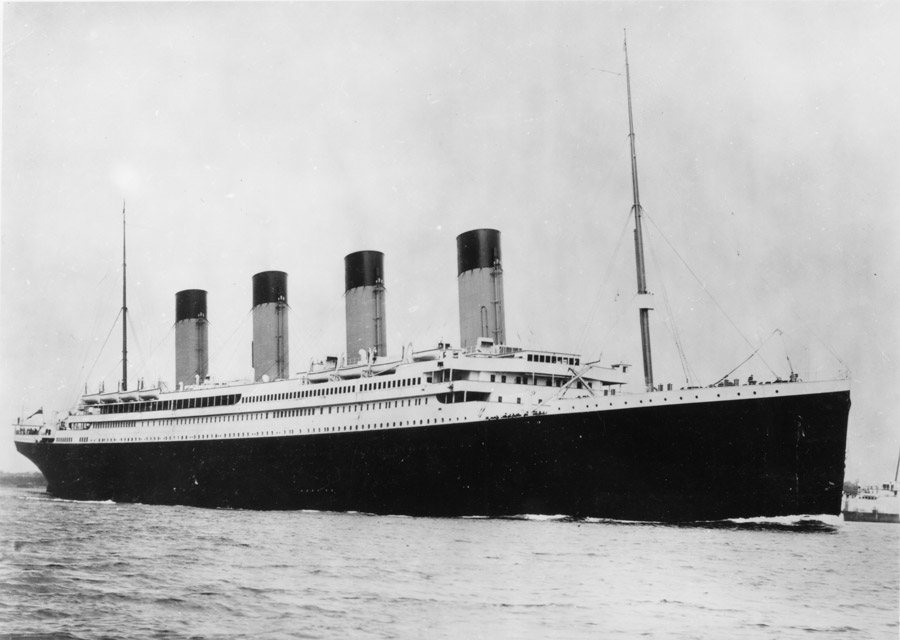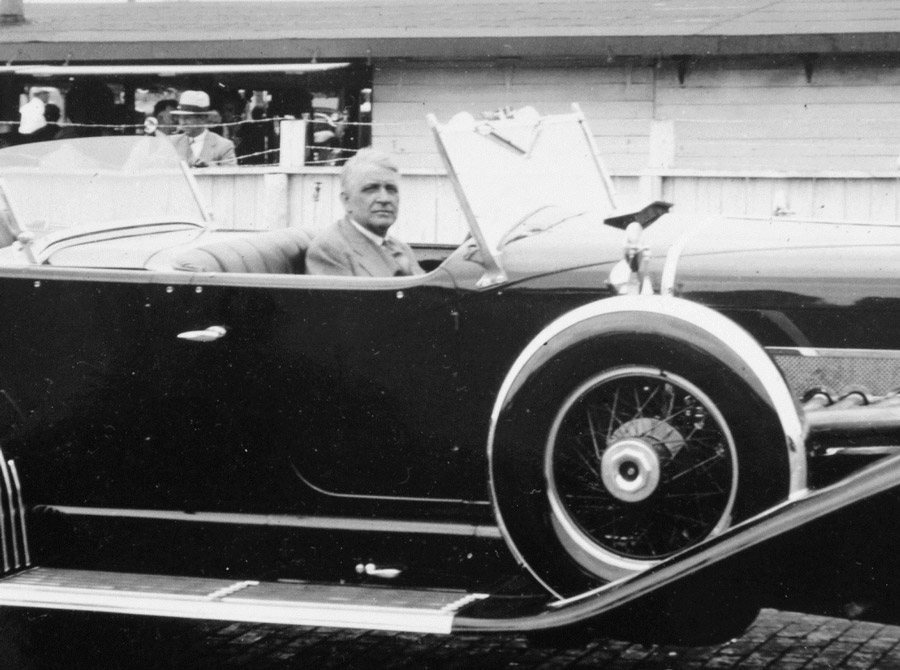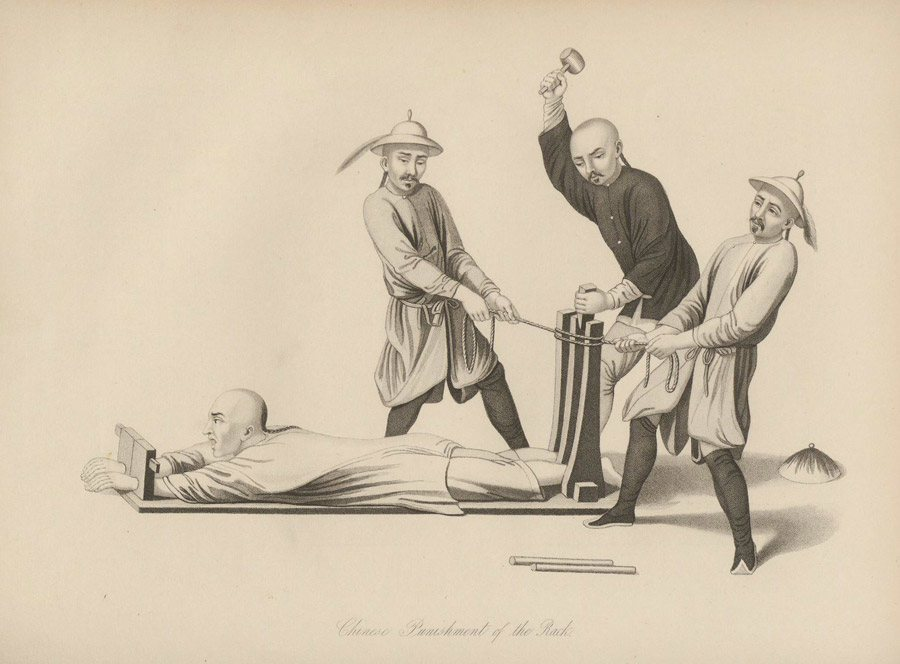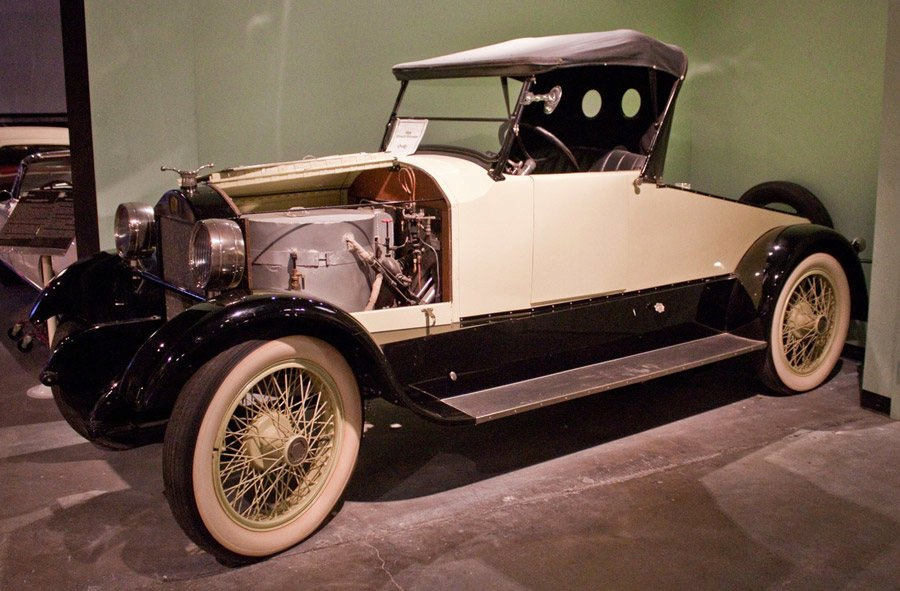Great scientists killed by their inventions

History is full of many and many inventors and innovators who have contributed by introducing completely new technologies and inventions or improving pre-existing techniques and making them better than the previous one in addition to them, and although many of these inventors were able to reap the fruits of their inventions and innovations, many were unlucky to gain nothing.
There is no doubt that inventing or discovering new things is a matter full of risks, so that some of these risks may be fatal sometimes, as happened to some inventors and discoverers who died as a result of things they invented or at least contributed to inventing, but despite the death of these great men, history will still remember their names And glorify their memory, for they gave their lives as a price for the progress and prosperity of mankind. In this article, we will get to know some of those great men.
1. The designer of the Titanic (Thomas Andrews)

Since his childhood (Andrews), who was born in 1873, he is fond of sailing and is very interested in this field, and since he was 16 years old, he was able to get a job as an apprentice in the Northern Ireland Shipyard, where he obtained a lot of knowledge and experience in the field of ships, and with evening classes at the College of Technology In Belfast, he managed to move on to become a ship designer and then chief designer at the age of 28, where he began designing his most important works: the almost identical ships Olympic and Titanic, as the first - unlike the Titanic - lived a long life and did not stop working until 1935.
In 1908 Andrews had sketched out his two ships, and by 1911 the Olympic had begun work on tracking the Titanic in 1912 with Andrews on board to record notes about future improvements that might be made on the ship.
Of course, everyone knows the fate of the Titanic, which hit an iceberg on its first transatlantic voyage, and although he knows his ship's plans well, (Andrews) realizes that the ship is inevitably sinking, but instead of escaping as soon as possible, he stays on the ship helping those trying to escape to That the ship sank and took its designer with it. ( source )
2. Bicycle director Sylvester H. Roper

(Rober) invented the motorcycle (which bears his name) and died due to an accident during one of his experiments on that bicycle, as he was one of the brightest American inventors, and he was one of the pioneers in building bicycles and primitive cars.
He also invented a sewing machine and a hot air motor, and his latest invention was the motorcycle (Velocepide). On June 1, 1896, Roper rode one of the models (Velocepid) and set out to test its speed, and reached a maximum speed of 64 km per hour, but suddenly he lost control of the vehicle. His bike got off the track, which led to an accident that cost his life, and he was found dead with wounds on his head.
After the autopsy, it was found that the cause of death was heart failure, and it is likely that the accident was the cause of stress on his heart and his death. ( source )
3. Airplane Inventor Aurel Vlaicu

At the beginning of the twentieth century the Wright Brothers had managed to create a successful aircraft heavier than air, and although it could barely rise a few meters and fly a very short distance, this inspired many around the world to continue thinking about flying and striving to turn it into a reality instead of Its survival has been a dream throughout human history, and one of these was (Aurel Vlaicu), the Romanian inventor born in 1882 and one of the early pioneers of aviation.
In 1909, (Fleiko) managed with his brother to invent a plane without an engine (depends on carrying the air current for it), where it can maintain a height between 10 and 15 meters, and during the same year he invented a small plane based on rubber ropes tightly wrapped to run after a propeller Provides propulsion for the plane, this small plane with a strange idea impressed many and was able to attract many financiers to the plans and projects of (Fleiko), who moved to think of engines as the future.
with the support received; (Vlaicu) built a new plane named after him: Vlaicu I in 1910, thus becoming the first Romanian aeronautical engineer, and the positive result attracted more supporters and reputation, which led him to create the second model: Vlaicu II, which he flew around Romania to promote aviation and air transport in the future.
Later he asked (Flaiko) to fly from the Carpathian Mountains as part of a special event, but for unknown reasons the attempt to fly was unsuccessful and the plane crashed fatally (Flaiko), who was still only 31 years old. ( source )
4. The Inventor of the Overcoat Umbrella (Franz Reichelt)

Reichelt invented the parachute (coat parachute) and died trying to fly with that parachute.
(Reichelt) is a French inventor known as the "Flying Tailor", who was also a tailor in addition to being an inventor, and is considered the pioneer in the invention of parachutes, and he wanted to develop suits that could turn into parachutes for pilots to help them jump safely during an emergency landing.
When (Reichelt) made the parachute suit, he tested it on the dolls he threw from the fifth floor, and the experiment met with partial success, but he wanted to try his invention from a high altitude, so he asked the police for permission to use the Eiffel Tower to test it, and got approval on February 4, 1912 He climbed to the top and threw himself from the tower, but the parachute did not work properly and he fell to the ground and died instantly. ( source )
5. Frederick Duesenberg

The American inventor (Dusenberg) born in 1876 was one of the early pioneers of the automobile at a time when the idea of the automobile was still very new, with horse-drawn carriages the dominant mode of transportation.
In 1904, Dusenberg and his brother designed the Marvel car as one of the first successful models of gasoline-powered cars at the time, and the two-cylinder engine that he designed helped gather many supporters and investors.
The real success of (Dusenberg) actually began after that when he moved to the field of racing cars, where he established a company that bears his name and manufactures high-quality racing cars that are distinguished from their peers, so that the Indianapolis race in 1921 saw that 7 of the cars that reached the finish line from Made by Dusenberg.
The distinction of Dusenberg's cars continued in the following years, but his luck ran out in 1932 and while he was driving one of his cars in the mountains of Pennsylvania, the car veered off the road and crashed, taking its maker with it. ( source )
6. Inventor of the first combat submarine (Horace Lawson Hunley)

Hunley invented the first combat submarine and died while trying it.
(Honley) was the engineer of the Confederate Navy during the American Civil War, he developed hand-powered submarines, and after several attempts he invented a combat submarine named after him “HL Hunley.”
On October 15, 1863, Hunley decided to take command of his submarine himself, but it sank and he and all the crew that accompanied him died. ( source )
7. Chemist Marie Curie

(Curie) invented a method that led to the discovery of the radioactive elements "radium and polonium", but she died of aplastic anemia as a result of prolonged exposure to radiation emitted from her research materials.
The great physicist and chemist Marie Curie was not only the first woman to win a Nobel Prize; But she was also the first person to win it twice, and her accomplishments included developing the theory of radioactivity, and techniques for isolating radioactive isotopes, as well as discovering the two elements: polonium and radium ( source )
8. Henry Smolinski and the “Flying” Car

Henry invented a flying car and died flying it.
Henry was a graduate of the Institute of Aeronautical Engineering, and he was fond of aviation and tried to develop a mechanism that could be an airplane and a car at the same time.
During the sixties and seventies, both cars and planes had become things that existed and spread around the world, especially in the United States, and here began thinking about the next step, which is still imaginary until now: the flying car.
The idea caught the imagination of many with attempts ranging from mere blueprints on paper to prototypes of experiments and even successful, albeit impractical, experiments. Among these attempts was Henry Smolinski and his partner Hal Blake, who wanted to turn flying cars into reality.
The project was not like other ideas that include a car that flies and gets rid of crowds, for example, or is led to work, shop, etc., but the idea was relatively simpler, as it was connecting wings to a Ford Binto car so that those who drive it fly from one airport to another where the wings remain at the airport and the The driver could easily get around the city or town by car. The idea may not have been as practical and useful as a car that could fly and pass the crowds, but it was more realistic and better applicable.
The idea seemed viable at first with a mechanism for flight and guidance in the air, but the detachable wings have a very big problem: what if they separate during the flight? The answer is not worth guessing, in fact, this is what actually happened during a routine flight in 1971, where the wings were separated from the cars that fell to the ground and crashed to kill both (Henry) and his friend (Hal), so the idea of developing flying cars stopped for many after this experience that contributed In keeping the idea out of the minds of the inventors. ( source 1 , source 2 )
9. Sabin von Sochocky, inventor of radium plating

Fonsochuki was the first to invent a luminous paint using radioactive radium, but ended up as Marie Curie due to his constant exposure to radiation.
Dr. Fonsochuki had a company that produced radioactive radium paint, but his workers began to suffer from symptoms of serious contamination with radiation, which led to the company being drowned in lawsuits due to the illness and death of many workers, but Fonsochuki was also not safe from these radiations and ended up dead. due to radioactive contamination. ( source )
10. The inventor of the high-speed rail vehicle (Valerian Abakovsky)

He invented the high-speed rail vehicle called the Iragon, and died when Iragon derailed during a test flight.
Engineer (Abakovsky) built a high-speed train by merging a train car with an engine and a plane propeller in an attempt to create the fastest railway vehicle in the world, but he died in an accident while trying his new machine. ( source )
At the beginning of the twentieth century, (Abakovsky) was working as a driver for the Cheka (an organization that was the former form of the Soviet secret police that emerged later), and during his work he believed that he had been able to present his ideas to some prominent figures among the Soviet leaders who supported him to implement a very strange idea, which is A "helicopter car" is a product of a train car running on rails, but instead of the engine that turns the wheels and uses friction to drive the car, a very high-speed propeller is used to propel the car at faster speeds than the trains at the time.
The idea was so well received by Soviet leaders that work on it began in earnest and a model of the helicopter was built by 1921. During the initial flight, Abakovsky himself was on board, accompanied by Fyodor Sergeyev (close to the famous communist leader Joseph Stalin) and four foreigners brought in by Sergeyeve. .
The trip from Moscow to Tula, a small industrial city south of Moscow, was about 200 km, as the departure went as planned without any problems, but the return route was different as the wagon derailed at high speed and crashed, killing everyone on board. . ( source )
11. The idea of rockets and fast-burning fuel (Max Valier)

At the beginning of the twentieth century, the idea of missiles and fast-burning fuel and dependence on it was still very primitive, and during the twenties and thirties when the field was still in its infancy, the Austrian inventor (Valley) became famous for his work and experiments on missiles, as he was one of the first and most famous rocket engineers thanks to the risks and experiences that He was doing it to attract interest and get funding for research and development and further experiments.
Some of Vallee's shows included rockets on sledges or even cars with rocket engines that go very fast (as shown in the picture above), but his dreams were bigger than that, as he wanted to make enough progress with rockets to allow them to fly to great heights and even reach space And the stars, although today missiles seem like something ordinary and even old, for the twenties, (Valley) dreams were very ambitious and did not come close to realization until two decades after his death.
Between 1928 and 1929, Vale was working on a number of rocket-powered cars and planes, and in the late twenties focused on developing liquid-fueled rocket engines, so he invented (Valley-Hylandt Rack7), a rocket car that uses a liquid-fueled propulsion system. .
By 1930 (Valley) was starting to test a new rocket with a new type of rocket fuel consisting of kerosene, water and liquid oxygen, and of course he was, like many inventors at the time, not paying much attention to safety, but he survived the first experiment that succeeded and even from the second as well , but he wanted a third experiment to settle the matter and confirm that his new innovation works, but unfortunately for him, the experiment failed with the missile exploding before its launch on May 17, 1930, and the shrapnel flying around, where one of them hit his pulmonary artery and killed him within minutes while he was thirty-five years old. ( source )
12. Chinese legislator (Li Si) Li Si

Unlike the other characters on this list, the character (Li Si) is very old and dates back to the third century BC during the era of the (Qin) dynasty that unified China for the first time, and there he entered the Chinese government and rose in positions to reach a position very close to the Chinese emperor And it affects his decisions and leads to changing a lot of things, but unlike other things, the changes (Li Si) were not positive in general, but a large percentage of them had a very dark character.
Si's positive achievements were centered on helping to standardize the weight of the coins minted by the empire, and even planning and organizing the construction of parts of the Great Wall of China and standardizing the writing systems in China, but on the other hand, Si can be seen as a very bad person in terms of starting a process Burning historical books and manuscripts because of its hostility to everything represented by previous history, and is the main reason today for the loss of a large part of ancient Chinese culture and knowledge in the period that preceded it.
The negative effect of (C) did not stop at burning books, but rather that he is known for being the innovator of a very brutal killing method called the Five Pains, where the matter begins with amputating the victim’s nose, one palm and only one foot, and then castrated and then cut in half from the waist, this method The heinous was carried out on many victims under the supervision of (C), but later and with his involvement in conspiracies after the death of the Chinese emperor, the new emperor betrayed him (whose (C) was plotting in his favor) and ordered his murder on charges of treason and in the same gruesome killing method that he devised. ( Source 1 , chest 2 )
13. Francis Stanley . Inventor of the Steam Car

During the nineteenth century, steam power was the primary form of energy and the best way to operate transportation at the time, which depended primarily on trains, but with the transition of the matter at the end of the century to cars, it moved as well (Stanley), who was born in 1849 and worked as a teacher and painter when he invented a way to make paints And the colors are in the form of smaller granules in order to draw more realistic images, as his technology was later developed into spray paint, which is used today in car paint.
In 1897, Stanley invented his own car that used a steam engine instead of a diesel or gasoline engine, as other inventors were planning. To a speed of 43 kilometers per hour at the Boston Auto Show.
With time things changed and Stanley's steam cars became unsuitable compared to their counterparts that used internal combustion engines, but (Stanley) continued using steam cars until he had an accident while riding in his steam car in 1918 and died before reaching the hospital. ( source )
14. The inventor of the flying taxi (Michael Dacre)
As we mentioned at the beginning of the article and as it is known to everyone, the idea of a flying car has been teasing our imaginations as human beings for a long time, but the matter here comes as a mixture that tends more to a plane used as an alternative to the car. Practical and small enough that it can be used in place of cars to avoid crowds or even move at high speeds from one place to another. Ducker's project may seem strange, but it came close enough to reality to gain support from the British government and even the European Union by 2009.
The designed plane had impressive specifications, as it is very small by aircraft standards and only needs 125 meters of straight path to be able to take off or land, and despite its use of jets, it is assumed that its sound was not really annoying, especially since it was flying at a low altitude of Only about 300 meters.
In any case, the experiments were not as planned in the promotional videos (such as the video above), as the first test showed the plane struggling to rise from the ground, and when it finally succeeded in taking off, it was not stable at all, and after reaching a height of 200 meters in the air, it lost control and landed in a crash. Earth to kill Docker with it. ( source )
https://dkhlak.com/great-scientists-killed-by-their-inventions/?utm_source=Facebook&utm_medium=PostPlanner&fbclid=IwAR0jPNz_Gtn2Vg5bgRvWrWPijR7b1-FhxiGdD2jCeAkLnGcvI4OluQPhU_I

